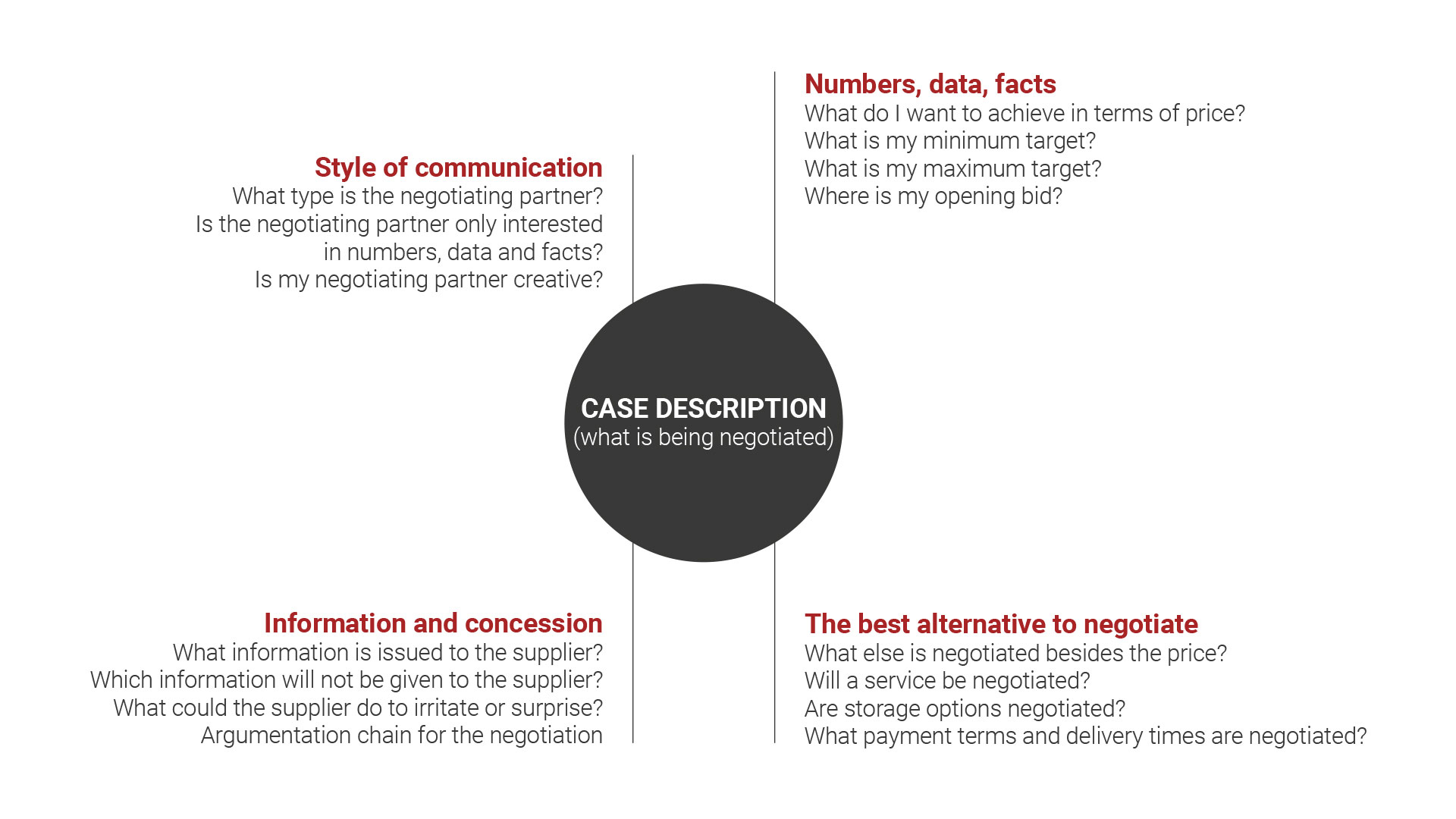Does purchasing have to prepare for negotiations? After all, they are part of everyday life ...
A quick question first: Do you think that a top athlete who, for example, has run a 100-metre race, thrown the javelin or kicked the football a thousand times, will suddenly stop training because he no longer needs to? Hardly! And so purchasing must also prepare for negotiations - precisely because they are part of everyday business life. You are probably familiar with the phrase: "Profit lies in purchasing!" and in order for this to continue to be valid, it is important to train your negotiating skills and to prepare yourself, just like an athlete does when a competition is coming up.
Some time ago, I wrote, designed and delivered a purchasing development programme for an international company in the retail sector. One of the main topics in this training was: Negotiating in Purchasing. What I have noticed about this topic in various trainings - whether in Germany, the USA, China or Mexico - is that almost always the argument "We don't have time to prepare" comes up. From my perspective with the trainer's glasses, I believe that this argument also derives from the fact that many people do not know how to prepare for negotiations.

Preparing for negotiations with the help of a mind map
Based on the questions asked in the training sessions on negotiations and my many years of experience in purchasing, I developed a mind map that takes into account all the topics for negotiation preparation - and it is no bigger than a DIN A4 sheet of paper. In the middle, the case is described, i.e. what is being negotiated, for example, normal tools or something more complex. Based on this, all figures, data and facts are noted in the upper right-hand corner. What do I want to achieve in terms of price? What is my minimum target? What do I want to achieve as my maximum target? What is my opening bid? I always call the bottom left corner the information and concession corner - this is where we write down what information will be given out to the supplier, what information we need and what will definitely not go out. Furthermore, we can list what could be irritating or surprising in the course of action with the supplier. In the mind map, a field can also be opened in which a chain of arguments is listed in order to negotiate with the supplier. Now, starting from our case, which we have written down in the middle, we go to the bottom right. There we have to write down "the best alternative to negotiate", i.e. the best alternative to the price. This is because we usually negotiate not only the price, but also a service, a storage option, terms of payment, delivery times etc.
Who are we actually negotiating with?
Another aspect that is noted in the mind map at the top left is the communication style in the negotiation. It is important for buyers to know what the negotiating partner is like as a person: What type of person is he? Is the counterpart very goal-oriented? Is it someone who only thinks in black and white and finds numbers, data, facts interesting or am I dealing with a creative personality? Is it perhaps also someone who, in principle, works steadily through his issues? Personally, I find it helpful to look at the DISC personality model, which helps me to classify my negotiating partner.
"Cheat sheet" beats folder
In order to fill out the mind map and breathe life into it, you naturally have to get to grips with your negotiating partner and the negotiating issue in advance. But instead of ending up with a thick folder of information material, there is a clear sheet with the really important information needed in the negotiation. From my own experience over many years in purchasing, I know that salespeople also like to try to steer buyers away from the concept a bit and drive them into a corner. The great thing about a clear mind map is that it can be used as a cheat sheet. But be careful, just like in school, you shouldn't let the other person catch you with the cheat sheet. If you have dealt with all the important issues beforehand, with the figures, data, facts, the alternatives, the chain of arguments, the information and concessions to be negotiated and the communication style, you often don't need the cheat sheet at all, but have everything in your head.

How will you structure your next negotiation?
If you have another negotiation coming up soon, try using a mind map this time. I'm a big fan of it and this method also puts an end to the argument that there is no time to prepare. I would like to encourage you to try it out yourself with a mind map. If you still have questions about this or would like to know more about how to build such a negotiation mindmap, then simply network with me on LinkedIn or make a free appointment.
You can also listen to more on this and other topics for future-proof strategies in purchasing in my podcast.